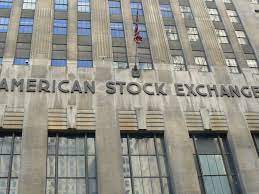
A little more than a week ago financial markets appeared on the edge of a precipice, about to be overwhelmed by the delta variant’s insidious spread and the plateauing economic recovery. Yet just days later, the S&P 500 put in back-to-back record highs.
Such market tremors and uncertainty are disconcerting for market professionals. But they are particularly nerve-wracking for private investors, especially perhaps for the 15% who only began investing last year.
The question for non-professional investors is, when the storm clouds gather, should you stick or twist?
If your main priority is progressing toward future goals such as retirement, there are several things you can do to limit the fallout from market stumbles, while remaining true to the principles of long-term wealth accumulation.
The guiding principle of any successful long-term investor is the old adage, “time in the market, not timing the market.” The impressive compounding of investment returns is only possible if you remain invested. At the same time, trying to pick a market’s top or bottom is a fool’s errand.
In practical terms, this means recognizing that, as brutal as some of the sell-offs have been over the years, the recoveries have tended to be swift.
The onset of the pandemic in March 2020 caused the MSCI World Index to drop by more than 35%. By August that same year, however, this index of global stocks had recovered to a new record high. It has since increased 28% more. Selling out at the bottom of the market would have been an expensive mistake, leaving you half as wealthy today as you might have been had you hung on.
Of course, recovery is never assured after a crash, which brings us to the second principle of investing: diversification.
The value of the St. Petersburg stock exchange was famously wiped out in its entirety following the Russian Revolution in 1917. A little more than 70 years later, Japan’s Nikkei 225 index ended the 1980s on a euphoric note, hitting a record high of 38,957.44 during the final session of the decade. Within a year it had almost halved in value, and it’s never traded that high again. Even today, it remains 29% below that December 1989 peak.
Clearly putting all your eggs into one basket (or one index) is a dangerous and risky thing to do. Had investors balanced their enthusiasm for Japanese stocks by also tracking a global index since 1989, they’d have been able to offset the Nikkei’s loss with a 450% gain.
But sometimes a portfolio’s diversity isn’t so clear. That’s why principle three is important: Look for hidden overlaps. A selection of funds might appear to spread your risk, but could actually end up concentrating it instead. Many of the most successful global equity funds in recent years will have been heavily exposed to the technology sector, and in particular the FAANG giants: Facebook Inc., Apple Inc., Amazon.com Inc., Netflix Inc. and Alphabet Inc. (aka Google). Even a portfolio of these funds would leave you very heavily exposed to what is essentially a single, large bet that the tech firms will continue their ascendency.
This can be easily avoided, however, by examining a fund’s largest holdings. Most online brokerage platforms these days allow you to X-ray your portfolio, breaking it down by geography, sector and asset class, revealing where your various fund choices overlap.
One overlap that caught a lot of U.K. investors out during the pandemic affected those seeking income. There are only a handful of blue-chip companies in the FTSE 100 index that have long track records of paying chunky dividends. A spread of U.K. equity income funds will inevitability duplicate most, if not all, of these names. When the pandemic caused dividends to be cut across the board, all equity income funds fell heavily, offering no diversification benefit whatsoever.
A fourth tip is to rebalance your portfolio after a strong run. For example, if you have built up a large exposure to the tech sector thanks to its strong market performance, it is possibly worth taking a little of your winnings off the table to avoid your portfolio becoming over-concentrated. Not everyone will necessarily agree with this, and if you choose to ignore this advice, you will need to watch your portfolio very carefully indeed.
The recent collapse of valuations in China’s tech sector should act as a warning. As recently as February, the Hang Seng Tech Index was riding high, hitting regular new records. Since then, however, a shift in the regulatory environment has seen the index fall by almost 45%. While those conditions are unlikely to be precisely replicated for the U.S. tech giants, it is nevertheless a warning that the tide will turn at some point, even for the biggest names.
It is worth remembering that Amazon’s share price fell 95% in 2000-2001 while many household names went the entire 100%. So by rebalancing, you might well miss out on some gains in the short term, but you’ll sleep easier at night knowing your pension risk is spread more evenly.









